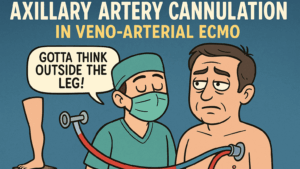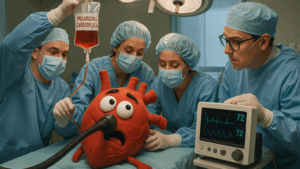Postoperative delirium (POD) remains a significant and frequently underdiagnosed complication following cardiac surgery, contributing to prolonged hospital stays, increased healthcare costs, and higher mortality rates. In the groundbreaking multicenter study titled “Evaluation of Postoperative Delirium in Cardiac Surgery Patients With the SDACS Screening Tool”, researchers Mahmoudi et al. aimed to address this issue by designing a novel, clinically practical screening tool—the Screening Tool for Delirium After Cardiac Surgery (SDACS). The study was published in Perioperative Medicine in 2025 and adopted a robust, multiphase approach involving a scoping review, Delphi consensus, and clinical validation.
The study was methodologically divided into three key phases. In phase one, a comprehensive literature review of 38 published studies led to the identification of 136 potential POD risk factors. In phase two, these factors were refined through three rounds of Delphi surveys with experts in perioperative and critical care. Seventy-six clinically relevant predictors were selected for phase three, where their efficacy was tested on 920 cardiac surgery patients across three academic medical centers in Iran.
Crucially, four independent predictors were statistically validated as significant contributors to postoperative delirium: chronic opioid use (OR: 4.605), hearing impairment (OR: 6.926), history of benzodiazepine use (OR: 8.506), and poor sleep quality on the first postoperative night (OR: 9.081). These variables were incorporated into a regression-based risk score model, producing the SDACS tool. Notably, the tool achieved a high predictive accuracy with an area under the curve (AUC) of 0.897, indicating excellent discrimination.
Additional statistical analyses using CHAID decision trees and logistic regression confirmed the multifactorial nature of delirium. Beyond the four predictors in the final model, other associated factors included age, education level, APACHE II scores, intraoperative conditions (e.g., CPB duration, red-cell storage), and postoperative complications (e.g., atrial fibrillation, hemodialysis, elevated lactate). Interestingly, morning ambient noise in the ICU was inversely associated with delirium, suggesting environmental modifications might mitigate risk.
The implications of these findings are substantial. SDACS allows bedside nurses and ICU clinicians to assess delirium risk early—right after surgery—using readily available clinical data. This proactive approach can facilitate targeted interventions such as improving sleep hygiene, reducing sedative exposure, and managing opioid use more cautiously. The study emphasized the practical design of SDACS: it uses only four variables, making it simpler and more feasible than other models like the E-PRE-DELIRIC tool, which requires numerous inputs.
Another novel element of the study was its focus on interactions between risk factors. The combination of poor sleep and benzodiazepine history led to a 71.47-fold increased risk of developing delirium, emphasizing the synergistic effect of these variables. This interaction accounted for 70% of the overall delirium risk in the studied cohort.
The study’s strengths lie in its rigorous design, large sample size, multicenter approach, and thorough validation methods. It adhered to international standards for clinical research, including ethical oversight, patient confidentiality, and STROBE guidelines. However, limitations exist, notably the lack of external validation and potential selection bias due to convenience sampling. Future randomized studies are necessary to confirm the tool’s applicability in diverse populations and healthcare settings.
In conclusion, the SDACS tool presents a highly effective, user-friendly method for predicting postoperative delirium in cardiac surgery patients. Its implementation could enhance patient outcomes by enabling timely, evidence-based interventions. With further validation, SDACS has the potential to become a standard component of postoperative care in cardiac ICUs worldwide.







